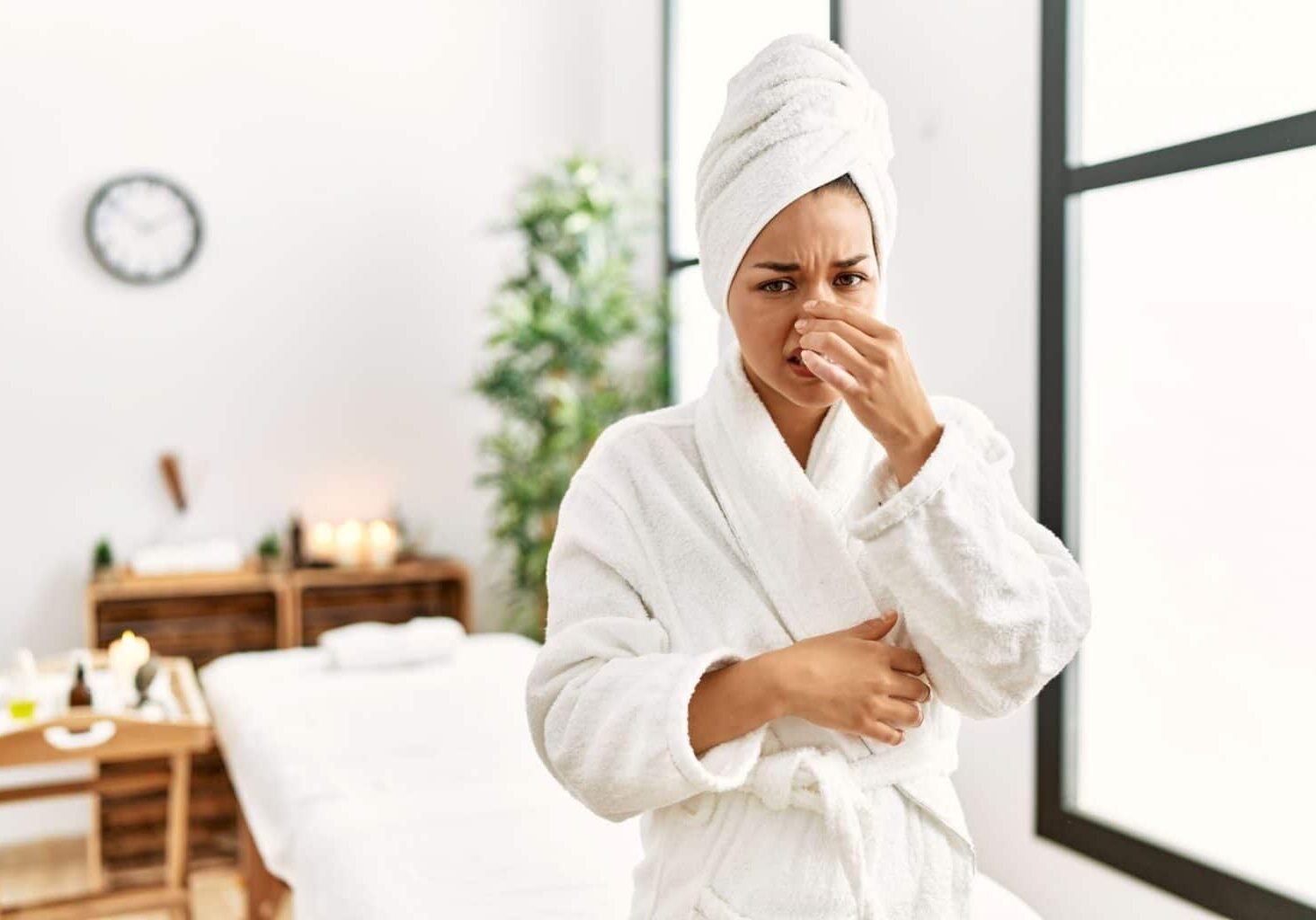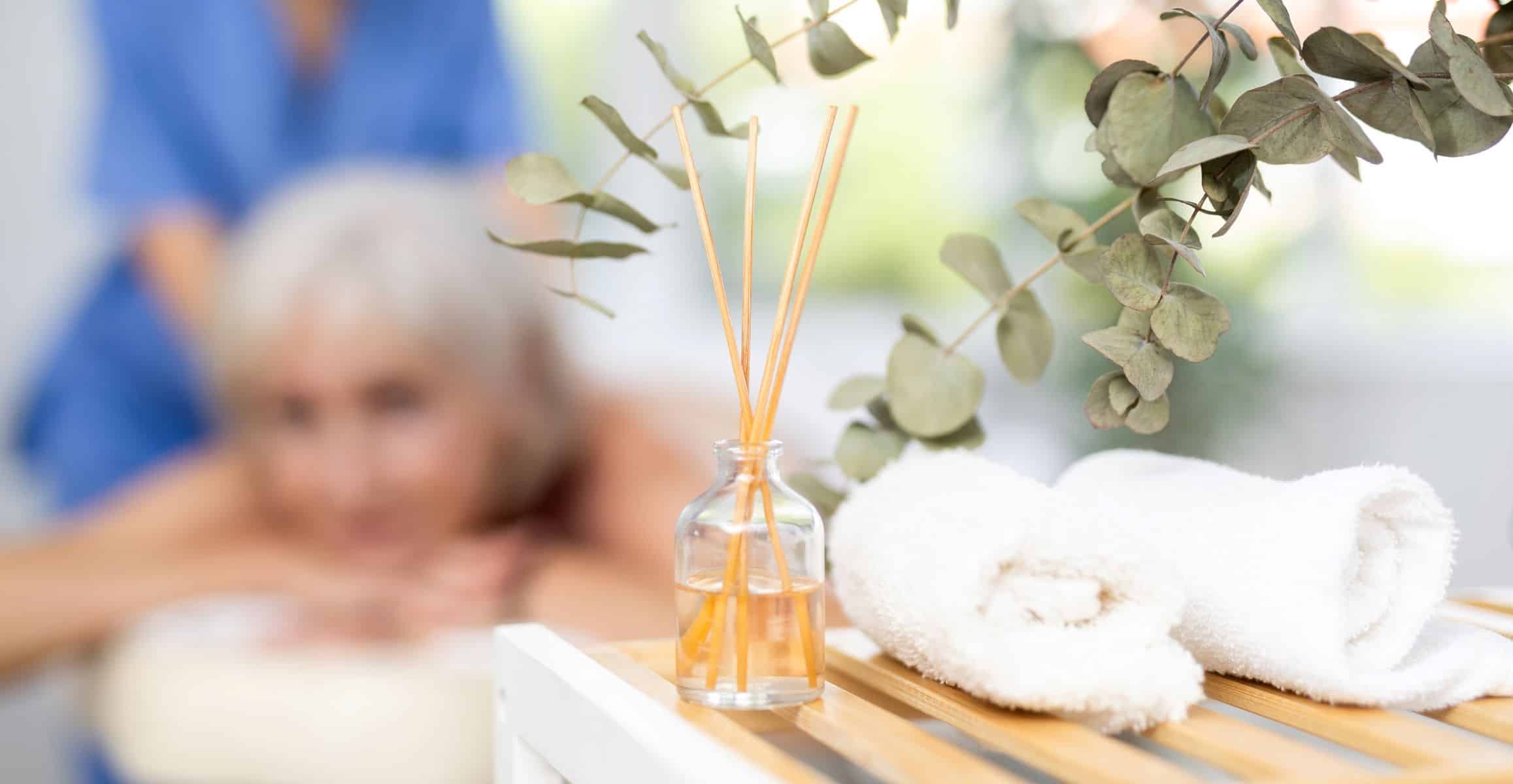No Bad Odors: How to Remove Bad Smells and Find the Best-Smelling Massage Oils and Candles
Last Updated: December 16, 2024

In the wellness world, smells mean a lot. That’s why many massage therapists are hard pressed about finding the best-smelling massage oil (or determining how to remove smells clients don’t like).
Scientists asked 225 individuals from nine diverse cultures—like hunter-gatherers and urban-dwellers—what they thought about 10 unique scents. Most agreed that vanillin, the main component of vanilla extract, smelled the most pleasant, explains Elizabeth Gamillo in Smithsonian Magazine. The least pleasant was isovaleric acid, an odor found in cheese, soy milk, and sweaty feet, ScienceDaily reported.
Odds are, you probably won’t light a sweaty feet candle in your massage room. (Probably. Hey, if an isovaleric-acid-candlelit-evening is your thing, we listen and we don’t judge.) But this study confirmed a big suspicion: the nose knows.
Evolution has driven us humans to avoid stinky situations that could expose us to predators or make us sick. That’s why you should never beat around the rosebush when it comes to preventing awkward massage room odors.
How to Choose the Best-Smelling Massage Oils and Fragrances for Every Client
According to the Body in Mind Massage Institute, perfumes and other strong odors are one of the most common reasons why massage clients complain.
It makes sense. Massages are an up-close-and-personal experience. You’re almost always in close proximity to your client. Any fragrance or odor that enters the room will inevitably linger.
For example, imagine you’re a smoker. Your client will spend the massage breathing in the smoke attached to your clothes, hair, and skin. Do you wear strong perfume, deodorant, or odorous hairspray? Same thing. Try to find neutral deodorizers. (And if sweating during massages is common for you, re-apply often to eliminate smells from B.O.)
Alternatively, do you use essential oils for massage therapy? Remember that a massage oil that smells good to one person may not work for everyone. Those with a more sensitive schnozz may think the same massage oil smells bad. Breathing it in could be uncomfortable or distracting instead of relaxing to them.
If you’re looking for aromatherapy safety 101, we covered that in a recent article. For tips to avoid customer complaints from bad odors, read on.
Tip #1: Select your products carefully.
So you’re looking for the best-smelling massage oils, candles, incense, and other products. Before a client even steps foot in your massage studio, you should already have smells in mind.
Start by defining the kind of spa atmosphere you want to create, advises Help Us Green, a sustainable incense company. In other words, what’s the vibe? Do you need natural scents for relaxation? Do you want the client to leave feeling energised and revitalised? Matching the smell to the ideal vibe will help you create a cohesive massage experience.
Next, shop carefully. Opt for natural, high-quality products from a reputable company, Healthline suggests. Poor-quality essential oils, for example, may have harmful additives that trigger side effects like headaches, nausea, and irritation. (Some side effects, however, have nothing to do with the fragrance’s quality and everything to do with the client’s health or preferences.)
It goes without saying that routine cleaning is necessary. But even if you clean multiple times a day, there could be underlying odors you’ve gradually adjusted to. Nose blindness is a real thing, people!
So if you’re really committed, you might loop in your favorite guinea pigs–your loved ones! Consider getting feedback from family and friends, like before introducing new products. They may share gentle advice for how to remove bad odors from the massage room.

Tip #2: Discuss aromatherapy during your consultations.
A pre-massage consultation is a fabulous way to help your returning and first-time massage clients feel comfortable.
During your consultations, ask clients to complete an intake form. Ask about their favorite and least favorite fragrances. You can even hold out bottles and ask them to point out the best smelling massage oil for you to use.
Understanding their lifestyle can also help. Don’t be shy about allergies, skin sensitivities, conditions like acne, and essential oil contraindications like pregnancy, either.
This feedback will help you decide which fragrances and essential oils fit best, if any. For example, a client with a stressful job may enjoy lavender, chamomile, and rosemary. Meanwhile, someone who’s pregnant or allergic to oils may need a lotion or massage oil without smell. Asking is the only way to know.
Tip #3: Check in during your massages.
Pre-massage isn’t the only time to learn your clients’ preferences. Pause at least once during the massage to check in, too.
They might say the candle is too strong, for example. Or whatever detergent you washed the sheets and blankets with gives them a headache. Perhaps you didn’t use enough detergent, and the lingering body odor after massage is giving Eau de Sweaty Feet. Maybe the eucalyptus in your massage oil burns or makes them nauseous.
That’s your cue to change it up. Before this happens, have a plan for how to get rid of essential oil smells. Crack open a window to let in fresh air or use a fan to clear the room. Then, to help eliminate the smell further, introduce something new, or avoid fragrances until the massage is over.
On the other hand, what if they love eucalyptus so much, they say it’s the best-smelling massage candle they’ve ever encountered? Or what if the lavender in your diffuser brings back memories of their Great-Aunt Myriam and they’re having an eye-opening, emotional experience?
That’s your cue to crank it up. Likewise, if they’re raving that your lotion or oil is the best-smelling massage oil ever, you can sell unopened bottles at your front desk. Or consider gifting them a bottle for a Christmas or birthday. These personal touches show you listen and care.
A massage therapist without insurance? Eau!
Just kidding.
But seriously, every massage therapist needs insurance coverage.
If you’re sniffing out an insurance provider that gets your industry, sniff no further. WellnessPro’s coverage goes with massage and bodywork specialists like vanilla and chocolate chip cookies. In other words, we’re a pair that makes perfect scents.
Fill out an app here to get a policy in minutes.
